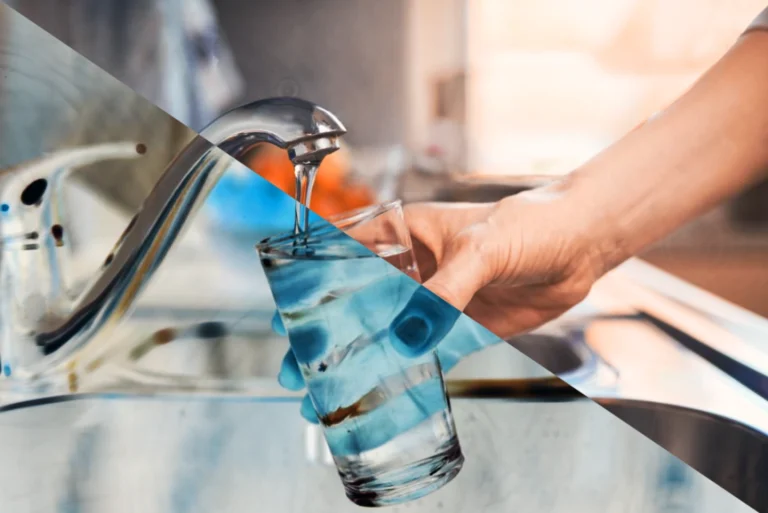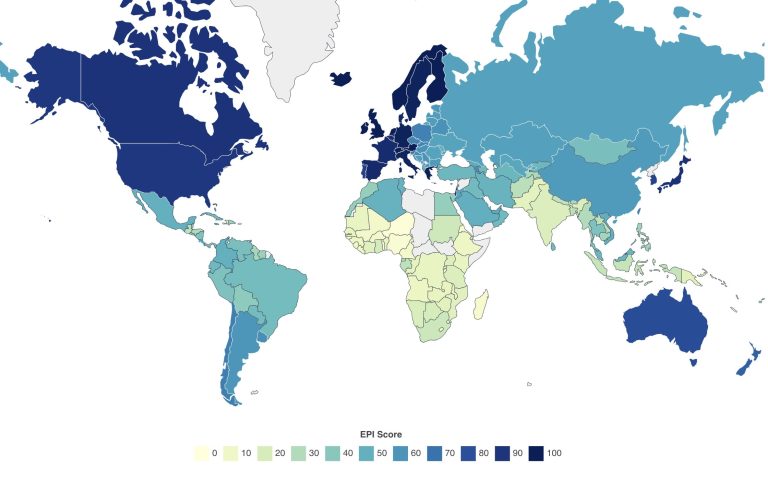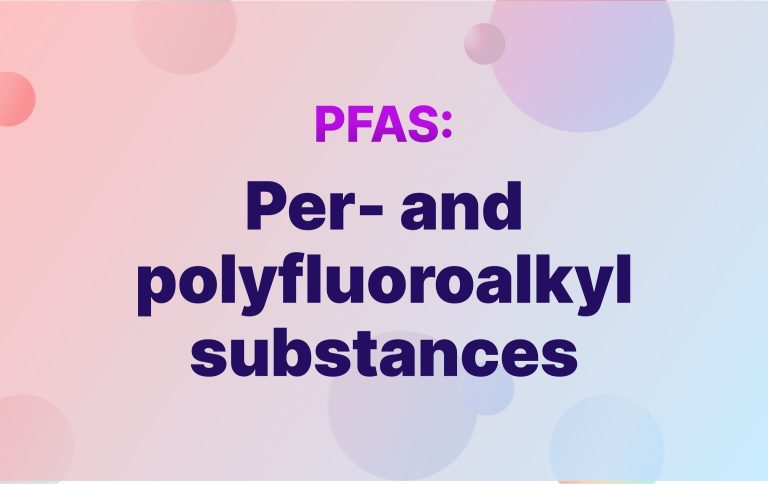Introduction to Tap Water Contaminants
Tap water contamination affects the quality of drinking water and poses health risks worldwide. It’s crucial to understand the chemical composition of tap water to ensure safety. This article focuses on common contaminants like Per-and poly-fluoroalkyl substances (PFAS), Perfluorooctanoic acid (PFOA), Perfluorooctanesulfonic acid (PFOS), and Polytetrafluoroethylene (PTFE). These substances have raised health concerns.
The types and concentrations of contaminants in tap water vary by region. Local environmental regulations, industrial activities, and the source water’s natural composition, pinpointing where contaminants can be found, influence these variations. A study by UNSQ Sydney highlighted global PFAS contamination, marking a significant news about water contamination. PFAS, also identified as a significant environmental burden due to their persistence, in the environment and the human body. Their presence in water sources poses a risk due to their durability and potential health implications, including cancer.
Exposure to PFAS can affect health in various ways, highlighting serious drinking tap water side effects associated with these harmful chemicals in water:
- Impact on the immune system.
- Suppression of the antibody response.
- Possible links to reproductive health problems, growth issues, and metabolic effects.
- Systemic inflammation and immunosuppression.
PFOA and PFOS are well-studied PFAS chemicals with known health effects. PTFE, known as Teflon, can also pose health risks upon exposure.
Understanding these tap chemicals is crucial due to their impact on human health. Some water sources have PFAS levels above regulatory limits, raising serious health concerns. Although tap water generally undergoes water treatment, with variations in regulatory standards and purification efficacy that can affect water safety, variations in regulatory standards and purification efficacy can affect water safety.
The regulatory limits for these chemicals, with specific mention of the toxic chemical pollution in water, are listed as follows:
| Country/Region | Compounds | Legal Safe Limit |
|---|---|---|
| United States | PFOA | 0.004 ppt |
| PFOS | 0.02 ppt | |
| Europe | Sum of 20 PFAS | 100 ppt (0.1 μg/L) |
| Total PFAS | 500 ppt (0.5 μg/L) | |
| Australia | PFOS + PFHxS | 70 ppt (0.07 μg/L) |
| PFOA | 560 ppt (0.56 μg/L) | |
| Canada | PFOS | 600 ppt (0.6 μg/L) |
| PFOA | 200 ppt (0.2 μg/L) | |
| China | No specific limits | No specific limits |
Water purification effectiveness varies among techniques:
| Technique | PFAS Removal Effectiveness |
|---|---|
| Granular Activated Carbon (GAC) | High |
| Reverse Osmosis (RO) | Varies |
| Ion Exchange Resins | Effective |
| High-Pressure Membrane Systems | Effective |
| Ultraviolet Light with Carbon Purification | Effective |
Educating the public and academics about PFAS, PFOA, PFOS, and PTFE is imperative. Understanding the health risks associated with long-term exposure is vital. Knowledge is the first step toward ensuring water safety and public health.
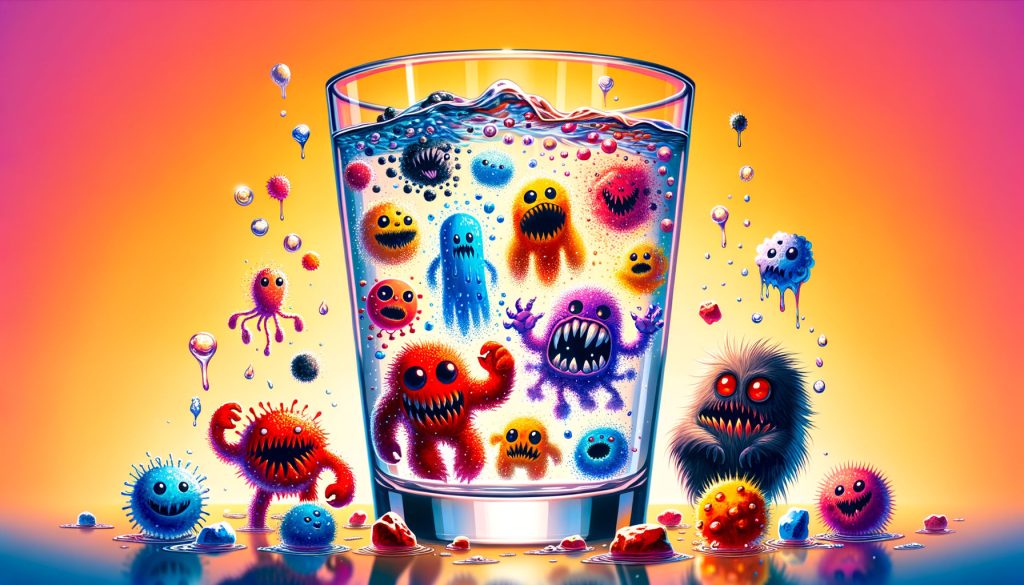
Understanding PFAS: The Forever Chemicals
What Are PFAS?
Per- and poly-fluoroalkyl substances (PFAS) are synthetic chemicals used in industries since the 1950s. They appear in a wide range of consumer products, including non-stick pans, water-repellent fabrics, and fire-fighting foams. PFAS have strong chemical bonds that prevent them from breaking down in the environment or the human body, earning them, illustrating ‘what does PFAS look like’ in a metaphorical sense as it highlights their persistence rather than physical appearance, the nickname “forever chemicals.”
Health and Environmental Impacts
Exposure to PFAS is linked to a variety of health issues, including high cholesterol, thyroid disease, pregnancy-induced hypertension, ulcerative colitis, and some cancers such as kidney and testicular cancer. These conditions underline the urgency in tackling PFAS exposure to safeguard public health. Moreover, PFAS accumulate persistently in the environment, contaminating water, soil, and living organisms, thus posing a difficult challenge for environmental preservation.
Global PFAS Contamination
PFAS significantly contaminate global water sources. A study led by UNSW Sydney shows PFAS prevalence in surface and groundwater, often exceeding safe drinking limits, raising concerns about whether you can drink city water safely. Denis O’Carroll, a senior author of the study, comments, “There’s a real unknown amount of PFAS that we’re not measuring. Commercial products like garments and food packaging contain more PFAS than we realize.” This underscores the potential underestimation of the environmental burden posed by PFAS.
Technological Advances in PFAS Removal
Efforts to mitigate PFAS contamination of water systems are under development, involving methods like activated carbon filtration, ion exchange resins, and high-pressure membranes. However, these solutions face obstacles such as high costs and the disposal of materials laden with PFAS. Research into advanced degradation technologies seeks to break down PFAS into harmless substances, thereby offering hope for more sustainable and effective remediation approaches.
Understanding the breadth and depth of PFSAS contamination and its impacts is essential for formulating strategies to protect both public health and the environment from these enduring chemicals.
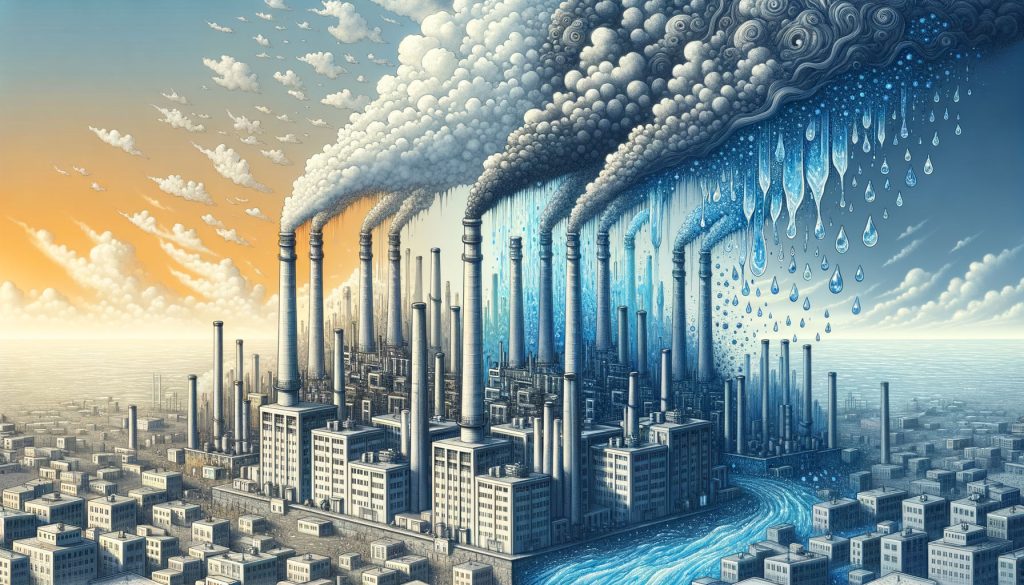
Other Prevalent Chemicals in Tap Water
Beyond PFAS, tap water can contain numerous other chemicals. These include lead, chlorine, chloramine, and various pharmaceuticals and personal care products (PPCPs). These substances enter our water systems through different pathways.
Lead, a dangerous heavy metal, can leach into water from aging pipes, especially in older infrastructure. It poses serious health risks, particularly to children. It affects brain development and can cause various health problems. Chlorine and chloramine are used to disinfect water. However, they can react with natural organic matter to form disinfection byproducts like trihalomethanes (THMs). THMs have been linked to an increased risk of cancer and reproductive issues.
Pharmaceuticals and personal care products encompass hormones, antibiotics, and painkillers. They enter the water system through human waste and improper disposal. The health impacts of low-level exposure to these substances are not fully understood. Yet, there is concern about their potential to disrupt endocrine systems and contribute to antibiotic resistance.
Tap water can also contain heavy metals like mercury and arsenic. Agricultural runoff, containing pesticides and fertilizers, can pollute water sources. These substances can cause neurological damage and increase the risk of cancer.
Tackling these contaminants requires comprehensive monitoring and improvements in water treatment technologies. Individuals can reduce their exposure by installing certified water filters. Ensuring the safety of tap water is a complex challenge. It requires vigilant oversight and continuous improvement in water management practices.
Assessing Tap Water Safety
Understanding and applying methods and standards from around the globe is crucial in evaluating tap water safety. Access to safe drinking water remains a significant challenge worldwide. Regions adopt different approaches based on their conditions.
The Role of Localized Testing
Localized testing is fundamental in ensuring drinking water safety. This method analyzes water characteristics in a specific area, considering unique contamination risks. Research highlights that localized testing is a popular strategy for assessing a region’s drinking water safety (Water Quality Country Rankings 2024). It helps identify and address potential contaminants, such as PFAS, PFOA, PFOS, and PTFE. Technologies effective in removing these contaminants include:
- Granular activated carbon (GAC)
- Certified water filters, including under-sink models
- Water treatment technologies that reduce PFAS levels
(Source: Reducing PFAS in Drinking Water with Treatment Technologies – EPA)
Global Water Quality Indices
The Environmental Performance Index (EPI) provides global insight into water quality. Yale University’s EPI is respected for its comprehensive water quality data aggregation. It assesses countries’ sanitation and drinking water safety. According to the 2024 EPI, the top 10 countries for water quality are:
| Rank | Country | 2024 EPI Score | 10 Year Change (2014-2024) |
|---|---|---|---|
| 1 | Estonia | 75.3 | 17.3 |
| 2 | Luxembourg | 75.0 | 4.1 |
| 3 | Germany | 74.6 | 4.4 |
| 4 | Finland | 73.7 | 8.3 |
| 5 | United Kingdom | 72.7 | 2.1 |
| 6 | Sweden | 70.5 | 1.6 |
| 7 | Norway | 70.0 | 3.6 |
| 8 | Austria | 69.0 | -0.3 |
| 9 | Switzerland | 68.0 | 1.8 |
| 10 | Denmark | 67.9 | 1.7 |
This data shows the performance variance among nations and highlights the achievements of leaders in water quality initiatives. (Source: 2024 Yale Environmental Performance Index (EPI)).
Estonia leads the ranking with the highest EPI score of 75.3 and a significant 10-year improvement of 17.3 points. Luxembourg and Germany follow closely with scores of 75.0 and 74.6, respectively, both showing positive changes over the past decade.
Why Estonia Has the Highest Score
Estonia’s top ranking in the 2024 EPI can be attributed to several factors:
- Strict Environmental Regulations: Estonia has implemented rigorous environmental policies and regulations aimed at improving water quality.
- Investment in Infrastructure: Significant investments in water treatment infrastructure have enhanced the quality of drinking water.
- Public Awareness and Education: High public awareness and education campaigns about water conservation and pollution prevention have contributed to better water management practices.
Why Other Countries Do Well
- Luxembourg: Known for its efficient water management systems and strong regulatory framework, Luxembourg has consistently high water quality standards.
- Germany: Germany’s success is due to its advanced water treatment technologies, comprehensive environmental policies, and strong enforcement mechanisms.
- Finland and Sweden: These countries benefit from abundant natural water resources and have implemented effective policies to protect and manage these resources sustainably.
- Switzerland and Austria: Both countries have long-standing traditions of environmental protection and robust infrastructure for water treatment.
Why Some Developed Nations Do Not Rank in the Top 10
- United States: Despite having advanced technology and infrastructure, the US has faced challenges such as aging infrastructure, pollution issues, and inconsistent regulations across states, impacting overall water quality scores.
- Japan: Japan has high standards but faces unique challenges such as industrial pollution and natural disasters affecting water safety.
- Canada: While generally having good water quality, some remote and indigenous communities face water access and quality issues, affecting national scores.
Regulatory Measures and Thresholds
Regulation plays a crucial role in ensuring clean tap water countries maintain their status by safeguarding water supply sustainability. Countries and regions set their own standards for drinking water chemicals. These standards reflect different approaches to safety and practicality. For example, there’s debate over PFAS contamination thresholds. Some countries have set stringent limits to protect health. This variance in regulations highlights the need for ongoing research and dialogue. It aims to refine and harmonize global water safety standards.
Evaluating tap water safety requires a comprehensive approach. This includes localized testing, global indices, and regulatory measures. As we learn more about chemical contaminants, our strategies for assessing and improving water safety will also evolve.
Tap Water Safety and Public Health
The quality of tap water is crucial for public health. Safe drinking water prevents diseases and protects health. However, the presence of chemicals like PFAS (Per-and poly-fluoroalkyl substances), PFOA (Perfluorooctanoic acid), PFOS (Perfluorooctanesulfonic acid), and PTFE (Polytetrafluoroethylene) in tap water is concerning. These chemicals may have long-term health effects.
PFAS, known as ‘forever chemicals’ or ‘forever plastics in water’ due to their durability, are linked to several health issues. The presence of these substances in water is a public health concern worldwide.
The EPA’s current standards for PFAS levels in the U.S. are:
| PFAS Type | EPA Standard (parts per trillion) |
|---|---|
| PFOA | 4 |
| PFOS | 4 |
| PFNA | 10 |
| PFHxS | 10 |
| GenX | 10 |
| PFBS | Not specified |
To protect health, people can use water filters that reduce PFAS or drink bottled water if tap water contamination exceeds safe levels. It is important to test local water supplies often. Advocating for stricter regulations on contaminants is key. For example, Canada limits all PFAS types to 30 nanograms per litre in drinking water, setting a strong precedent for other nations to follow.
Public health campaigns can raise awareness about the risks posed by tap water contaminants. They also promote actions to reduce exposure. Education is vital for empowering communities to demand better water safety standards and supports research into more effective water treatment technologies.
In conclusion, despite tap water being safe in many areas, the presence of high PFAS levels, viewed as a PFAS carcinogen concern, indicates a need for ongoing vigilance and proactive measures for community health.
Emerging Containers and Future Challenges
As we understand tap water safety better, we face the challenge of emerging contaminants. One group of chemicals, known as PFAS (Per-and polyfluoroalkyl substances), has been under scrutiny. Research from UNSW Sydney reveals a widespread underestimation of PFAS contamination. Many water sources exceed the safe limits for drinking. Read more about this study.
The health effects of PFAS exposure in humans include:
- High cholesterol
- Thyroid disease
- Pregnancy-induced hypertension
- Ulcerative colitis
- Kidney cancer
- Testicular cancer
- Immunosuppression, leading to childhood infections
- Increased risk of airway and throat infections
- Diarrhea
(Source: ATSDR – Health Effects of PFAS)
Dealing with water pollutants requires the development of adaptable safety standards. As science discovers new contaminants, our regulations must quickly reflect these findings. However, countries vary in their regulatory approaches. For example, Canada limits the total of all PFAS types. Contrastingly, Australia and the US have more selective criteria. This difference shows the varied precaution levels worldwide.
Balancing public health with mitigation strategies is a challenge. Although treated drinking water systems, particularly when assessing ‘can you drink city water’ often remove PFAS, their presence in source waters indicates the need for more advanced treatment technologies. Innovations in water treatment, such as electrochemical methods, advanced oxidation processes, and nanofiltration techniques, are being explored and developed to enhance the removal of PFAS and other emerging contaminants. These emerging technologies, along with established methods like the following offer a comprehensive approach to ensure the safety of drinking water:
- Granular activated carbon
- Ion exchange resins
- High-pressure membrane systems
This situation, exemplified by the contaminated water in the USA, highlights the need for stricter aus chemicals usage and disposal regulations. It also underscores the importance of continuously advancing treatment strategies to address newly identified contaminants like Compound P in water.
Emerging contaminants underscore the need for ongoing public education and research. As scientists uncover the extent of health effects from tap water chemicals, public awareness is key. It promotes safer water consumption. Moving towards global water quality standards could harmonize efforts to address these challenges.
The future of water safety relies on proactive identification and management of emerging contaminants. Collaboration among governments, scientists, and the public is crucial. Together, they can ensure tap water remains safe amid evolving challenges.
Global Efforts in Improving Tap Water Quality
The imperative to ensure safe drinking water has spurred global efforts in improving tap water quality to mitigate harmful chemicals such as PFAS, PFOA, PFOS, and PTFE. Countries are adopting advanced water purification technologies and stringent regulations to protect public health. This collaborative effort is focused on harmonizing water quality standards, making strides in the monitoring and efficient removal of specific contaminants.
Research and development play a crucial role in these global endeavors, as illustrated by a study from UNS Diego, set to conclude by 2026, which aims to develop effective methods for quantifying PFAS in the environment and exploring their degradation. Moreover, there is an important emphasis on international collaboration to establish global water safety standards, including consensus on acceptable levels of chemicals in tap water. Sharing research findings, technological advances, and best practices in water treatment and regulation underscores the collective commitment to improving water quality worldwide.
The health risks associated with long-term exposure to PFAS compounds are significant, raising concerns over their adverse impacts on the immune system, potential links to immunodeficiency, and widespread environmental accumulation that leads to exposure in humans and wildlife. This underscores the urgency of addressing PFAS contamination on a global scale.
The technical strategies to combat PFAS in drinking water, including the use of Granular Activated Carbon (GAC), Ion Exchange (IX), and High-Pressure Membrane Systems, such as Reverse Osmosis water filter systems, are instrumental in reducing levels of these harmful compounds. These technologies represent the ongoing advancements in water purification that are essential to the global strategy against PFAS.
Confronted with the diverse regulatory landscapes among nations, the global community faces challenges in the consistent application of PFAS standards. The variability in regulating these substances is indicative of varying levels of awareness, resources, and technology accessibility. Nonetheless, sustained dialogues and collaborations among international partners are pivotal in overcoming these challenges and advancing toward uniform water safety standards.
In summary, the concerted global efforts to enhance tap water quality underscore the universal recognition of water as a fundamental human right. With continued technological innovation and collaborative international efforts, achieving the goal of providing safe and clean water for all remains an attainable objective, despite the formidable challenges posed by pollution and contaminants.

Conclusion: The Road Ahead for Tap Water Safety
We have explored the complexities of tap water safety, focusing on harmful chemicals like PFAS, PFOA, PFOS, and PTFD. Their presence underlines the need for rigorous testing, regulation, and reduction in our water supply. Research has consistently linked exposure to PFAS, PFOA, PFOS, and PTFE to a multitude of health impacts, including but not limited to:
- Various forms of cancer
- Immune system suppression
- Chronic systemic inflammation
- Increased susceptibility to childhood infections
- Development of airway and throat infections
- Gastrointestinal disorders such as diarrhea
The study by Denis O’Carroll on global PFAS contamination serves as a cautionary tale about the risks of using chemicals without a complete understanding of their health implications. He calls for a prudent approach to chemical use. O’Carroll’s research is chronicled in PFAS forever chemicals above drinking water guidelines in global source water, underscoring the imperative for a paradigm shift in chemical usage towards consideration of long-term health and environmental impact.
The most effective methods for removing PFAS, PFOA, PFOS, and PTFE from drinking water, along with their respective removal efficiencies, are as follows:
| Method | Chemicals Removed | Percentage Removed |
|---|---|---|
| Activated Carbon Filtration | PFOA, PFOS, PTFE | Varies |
| Reverse Osmosis Filtration | PFOA, PFOS, PTFE | Up to 99% |
| Ion Exchange Resin Filtration | PFOA, PFOS, PTFE | Up to 99% |
| KDF Filters | Not confirmed for PFAS | N/A |
| Boiling Water | Not effective for PFAS | N/A |
(Source: Reducing PFAS in Drinking Water with Treatment Technologies – EPA)
Precise local water quality assessments are pivotal. They empower nations to identify and address vulnerabilities within their water safety frameworks, which is vital for securing long-term public health and water resource sustainability. This concept is reinforced in Water Quality by Country 2024, which asserts:
“Measuring the safety of the drinking water in each area of a country is vitally important. It helps that country focus its efforts to ensure the long-term health of its citizens and sustainability of its water supply”
Water Quality by Country 2024
Current regulations concerning PFAS levels in drinking water vary internationally. In the United States, the establishment of Maximum Contaminant Levels (MCLs) pertains to specific PFAS compounds and to total PFAS concentrations:
| Region | PFAS Limit |
|---|---|
| United States | MCLs set for PFOA, PFOS, PFHxS, PFNA, and HFPO-DA as individual contaminants. PFAS mixtures use a Hazard Index MCL. |
(Source: EPA – PFAS in Drinking Water)
To enhance the safety of tap water, we advocate for intensified research to fully elucidate the health risks posed by chemicals in tap water. As our understanding evolves, so too must our regulatory frameworks, which ought to rigorously limit the presence of hazardous substances and mandate comprehensive purification processes. The imperative to educate the public on these risks cannot be overstated; informed citizens are empowered to demand higher safety standards and sustainable practices.
The journey towards ensuring clean tap water is one that requires the collective effort of scientists, regulators, governments, and the global citizenry. Only through such collaboration can we achieve our goal of safe tap water—a crucial balance of technological progress and environmental responsibility, underpinned by a staunch commitment to public welfare.


